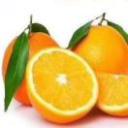Beauty in Mirror
时间:2022-03-11 11:29:36
Duration: Sept 15-Oct.15, 2012
Add: No.1 North of Renzhuang, SongZhuang, TongZhou, Beijing(appointment only)
Admission fee: RMB 20
Feng Qian likes to describe the ancient beauty. She tries to create her own beauty by combining the ancient elements with her own contemporary understanding. So the beauty in her works is cartoon character-like, with exaggerated modern hairstyle, big eyes and baby face, and with a trace of pathos in her eyes. Who is she? Where is she going to? There is not any sign from the name of painting; different people have different answers in their images.
Passage - YANG Zhenzhong Solo Exhibition
Duration: September 5- October 20, 2012 Venue: Bldg 11, 18 Wuwei Rd., near Qilianshan Rd., Shanghai Hours: 10:00 – 18:30 (Closed on Mondays) Contact: +86 21 3632 2097
From this month, YANG Zhenzhong mounted his solo exhibition Passage in his atelier in TOP Art Park. The show space is divided into two sections by a passage, an artificial construction commonly seen in urban milieu, whose basic configuration — an exit and perspective lines which converge on the exit — is featured repeatedly in a series of videos and painting installations. Meanwhile, human activity is stripped away from these manmade spaces where the artist gives deliberately a presentation “destitute of content”. As YANG comments on this exhibition, “‘a passage’ is a void space running from one content to the next, which is even not a process.”Most celebrated by his sharp and witty manners in art production, YANG Zhenzhong employs a variety of media and approaches, dabbling in themes related to multilayered social experience. A linkage to “passage”, which is visually and emotionally imperceptible, another two videos to be displayed imply the involvement of “passage”in both physical and psychological space. Challenging himself, the artist paints realistically on a set of installations using “pseudo-perspective” and thus delivers a twofold illusion. The way he works, which appears to add unfamiliarity to both his fabrication process and viewing experience of audience, stands as another exploration into the laws of visuality and perspective in his recent artworks.
Liu Wei refuses to give this exhibition an explanatory title, insisting there is nothing to be said in words and that nothing can be said. Taking form over the course of one year, the exhibition fills both halls of the Long March Space gallery. The audience is acutely aware that the segmenting and division of the exhibition space presents an inherent issue. However, it is only upon “entering the space” that the problematic visual and physical relationship of the space reveal themselves. The standard terminology of “conceptual”, “installation”, “site” and other related phrases lose their descriptive meaning. Instead, Liu Wei’s work presents us with a vocabulary filled with uneven bars, large circular tables, rectangular pillars, canvas, scaffolding, large and small, vertical and horizontal, wrapped, bound, and cut so that he is able to find the logic behind his materials and the space. During the preparation of the exhibition, there was a conscious desire by Liu Wei to break free from his system. However, after repeatedly entering into the space, has this not turned back into the unconditional support of Liu Wei’s system, his concept that“form is the most political”. Although Liu Wei often uses the word “reality”, we can be certain that he is not speaking about our conventional precepts, but rather the multilayered membrane of ideology and structure.
Widely recognized as one of the most dynamic and audacious artists of his generation, Liu Wei (b. 1972) has come to international attention for his enigmatic but incredibly arresting“Gesamtkunstwerk”, a culmination of elements that are brought together offering an acute visual commentary on the urgent situation in China and beyond. While earlier works engage with and make use of particular cultural, social and political ideas, his recent series of works focuses on his relationship with the fundaments that constitute our world, seeking to “get past what is immediately visually available, and realize more of the value within the matter itself.”
文档上传者
热门推荐 更多>
- 1The Beauty of Old Books
- 2A Panoramic View of the Beauty of Chin...
- 3Yangshuo,a Small County with Grand Bea...
- 4Chinese Beauty yue-Sai Kan, Presenting...
- 5The Pursuit of Beauty and Truth
- 6BazhongA City of Tranquility and Beaut...
- 7NYINGCHI,THE NATURAL BEAUTY,THE BEAUTY...
- 8Calligrapher Explores Beauty in Writin...
- 9Beauty New
- 10BEAUTY SPY
